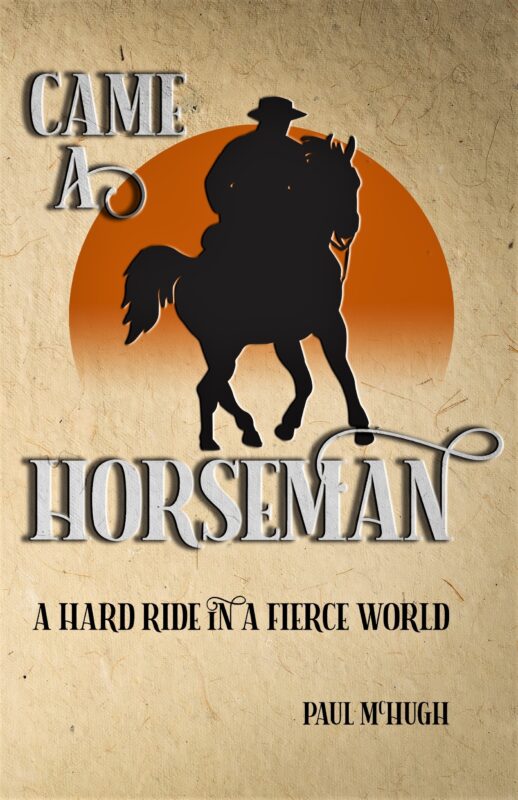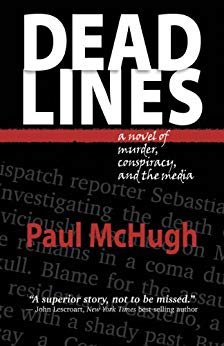California North Coast Series
By Paul McHugh, Outdoors Writer
October 3
Poseidon had now blessed us with two sweet, easy days. We prayed that, in all the god’s seaweed-wreathed, guano-breathed providence, he might anoint us with the bounty of a few more.
Weed and I packed up at Cuffy’s Inlet and sea-horsed around, paddling in and out of the caves that wove through the cove’s headland. But, enough with all the dawdling! By 10 a.m. it was high time to set a course for Point Arena, a jump of about sixteen miles.
We put out to sea on a 180-degree bearing, to cut across the big curve the coast takes inland here. We also did that to ensure we’d collect an ample supply of leeway should both wind and wave kick up.
Sure, conditions seemed benign and steady, and my voyage-honed instincts said they should hold for a good while. But NOAA weather radio had called for the eventual onslaught of nine-foot seas, their crests feathered by twenty-knot winds.
As Falstaff famously pointed out amid a sword fight, “Discretion is the better part of valour.” And as Reagan once said of the Soviet Union, “Trust, but verify.”
Tallest Light in the West
After a few hours of steady paddling we reached a point about three miles offshore, where we acquired a useful visual on the slim shaft of the Point Arena lighthouse.
Rising to a height of 115 feet, it’s the tallest navigational beacon on the West Coast. We shifted course to 165 degrees. Now, we were in great shape. If a northwest blow cranked up, it would come from astern and push us in, rather than cross over our quarter and make the boats wallow.
I switched on the mapping GPS to double-check our position.
“Hey. It tells me we’re way out in the ocean,” I informed Weed.
“Really?” he responded. “No foolin’?”
V-shaped flights of dark cormorants flapped across bright skies. Dorsal fins of harbor porpoises cut the sea all around us. Swimming common murres made their shivery cries. The fat, white, concrete finger of the lighthouse drew closer. The first gusts of rising wind began to flick at our paddle blades as we neared shore.

The cove and wharf at Point Arena. Weed and McHugh lodged in a tiny shack at upper left. Photo by Paul McHugh.
The Point Arena light has become a beacon in a way other than the obvious one. The Coast Guard wanted to lock it up and just leave a robot strobe on its balcony rail in the 1970s. But a cadre of locals fought a long battle to keep the light open to the public. A an ad hoc group dubbed Point Arena Lighthouse Keepers formed in 1982, won title to and stewardship of the light in 1996, and against long odds has kept it both operating and open to the public ever since. So now it’s an icon of volunteerism, a concrete symbol of a can-do civic spirit that continues to glow plentifully in the coast town nearby.
Landfall in Point Arena Cove
We glided on the rising swells into the harbor a few miles south of the light. I quickly spotted our prospective crash-pad: a small shack on the north side of the land end of the town’s commercial wharf. Bob Juntz, the friendly urchin processor I’d met up at Noyo Harbor, had once used the shack as his southern HQ, and granted us permission to unroll our sleeping bags in the now-musty and vacant space within.

An urchin harvest, dripping with brine, comes out of a hold at Point Arena’s wharf. Photo by Michael Maloney, S.F. Chronicle.
Weed and I made landfall on the shoreline’s round cobbles. We unloaded our boats and packed our drybags of gear up to the urchin shack, then hauled our boats onto its deck, tugging up bow and stern lines hand-over-hand. Since a big swell was scheduled to come crashing in later, leaving our kayaks down by the seawall to shift for themselves – no matter how well we tied them to pilings – simply was not in the cards. Next, I strolled out onto the wharf to greet harbormaster Mitch McFarland.
A tall and weathered man with ginger hair and beard, clad in a knit cap and lumberjack shirt, McFarland was a popular local eminence I’d met on an earlier research trip. He’d told me some of the wharf’s history. One of the first ever built on the North Coast, the pier’s wooden, 1866 edition had enabled quick and efficient movement of local produce onto doghole schooners. It proved much easier and safer than the sort of deliveries afforded by the coast’s steep and relatively flimsy cargo chutes; those could swiftly turn hazardous if stevedores lost control of a load.
Pursuit of a Perfect Pier
But even the stoutest wharf here will eventually grow ramshackle too, from heavy industrial use as well as repeated impact of ocean storms. The last wooden pier built here had been utterly demolished by a “hundred-year wave” during the epic winter of 1983. After that, the state’s department of Boating and Waterways joined the town in constructing a formidable platform of concrete and steel that rose 25 feet above the waves and extended more than a hundred yards out to sea. It was distinguished by a cargo crane, a sling hoist for boats, and – our favorite feature! – a bathroom with hot showers.
McFarland, who’d worked as a commercial seaman for twenty years before settling here, seemed inordinately proud of the facility. The wharf was now thirty years into its own commercial career and holding up well. He did shake his head over the heap of wrangling that townfolks, state agencies and private landowners had to go through to get the thing established and running. But it now can ably serve crab fishermen in winter, salmon trollers in summer and fall, urchin divers sporadically, and sport anglers – who either launch small boats with the sling hoist or stroll out on the pier to cast straight out over the railings – year-round.

Harbormaster Mitch McFarland stands near the foot of his wharf at Point Arena. Photo by Michael Maloney, S.F. Chronicle.
Not that any of them did particularly well this year. The salmon catch, good in early September, had tapered off. Tuna never so much as made an appearance. Few urchin boats still even worked. Still, the wharf provided locals and visitors alike with an unending harvest of excellent views.
“It’s been a wonderful place for me to hang out,” McFarland said. “I’ve seen crazy sights, and caught some pretty remarkable ones as well. Migratory gray whales go past through the kelp beds right outside the cove buoy. Someone can stand out at the end of the pier all April and see a whale pass by about every ten minutes.”
A Word from the Wise
Acting in his official capacity as harbormaster and host, McFarland dipped a hand in his pocket and tilted his palm to slide me and Weed a cluster of brass tokens that would allow us to take as many hot showers as we wished. I thanked him for his hospitality, and allowed as how this wharf would make a particularly fine spot for us to utilize as a home base while I explored his town.
“Okay,” he said. “But whatever you do happen to end up writing about us, please don’t ever let yourself call Point Arena a, ‘quirky, charming, little town in paradise.’ I always hate that crap.”
No problem. I told McFarland I’d been warned off using that type of strong language by the Mendocino locals, and I aimed to stay polite.










